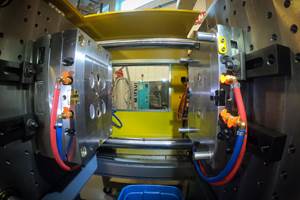Exploring ISO 9000 - Part 18 Training
A Series of International Standards for Quality Management and Quality Assurance: Element 4.18 Training
Element 4.18 Training
"The supplier shall establish and maintain documented procedures for identifying training needs and provide for the training of all personnel performing activities affecting quality."
Training is a responsibility most often falling within the scope of the Human Resource Department. This responsibility is often shared with managers, supervisors and lead operators/technicians who have direct contact with employees and can identify training needs. When I ask the question "How do you identify training needs?" the answer is often "We have a yearly performance review process and that is when we note training needs." During the audit process I ask to see selected performance review records to document objective evidence about training needs. Unfortunately, I find reviews are not current, are past due and do not contain the required notes documenting completed training or needs.
In other cases, company management has provided performance review training. They provide a format requiring mutual identification of at least three specific training needs related to both work and personal growth. This is the exception, not the rule.
Action Item
Who is subject to the requirements of 4.18 and how do you define training needs?
Everyone in your company is subject to the requirements of this clause including the President. ISO Q9000-2-1997 Guidelines for Implementation provides several steps to be taken to achieve and maintain proficiency:
- Evaluating the general education, experience, qualifications and competence of the personnel for the activities performed;
- Identification of the individual training needs against those required for satisfactory performance;
- Planning, organizing and carrying out appropriate training or retraining either in-house or by an external organization;
- Recording training and achievement so that records can be updated and gaps in training can readily be identified and filed; and,
- Evaluating all changes in each process for any additional training requirements.
There are many ways training needs are identified. Let's start with new employees.
During the hiring process, job-specific requirements have been defined and used to qualify acceptability.
Orientation: New employees (including part-time and temporary personnel) receive orientation training that is based on the position responsibilities. This training includes learning about job specific procedures, work instructions, and also local, state and national regulations including OSHA, EPA, ADA, etc. Orientation training ranges from a few hours to a full month of moving from department to department based on the position. However, this training is often passed over because of urgent production needs, shortages of labor or just plain laziness. It is mandatory that you document this training.
On-the-job: Now the employee is working and the supervisor or lead person is responsible for determining the employee skill level and helping the employee learn on the job. This process can be achieved using a job-specific task checklist. The employee begins by watching the operation, then performing the operation with guidance until competency is developed to operate alone. The supervisor is responsible for signing off and documenting individual ability. The result can be fully competent, needs additional time on the machine, not competent or reassign. This practice takes time. Sometimes training workshops, videos, computer-driven programs or off-site workshops are developed to meet specific on-the-job technical or non-technical needs. Cross training falls under on-the-job training.
Mistakes/nonconformances: Another method of identifying training needs is actual work result. When there are quality issues, on-time issues and behavioral issues that cause bad product, lost time, scrap/waste, rework or arguments, the need for additional training becomes evident. Be sure that the issue is not one of poor communication. Often the employee is doing what he/she has been told to do and it is the process or system at fault, not the employee.
Audit results or corrective action requirements: Analysis of audit results and corrective action results can often identify training needs. Customer complaints are included in this category. Tracking causes and developing trends is an easy way to identify training needs. Look at the results and analyze the data to find out if root causes include lack of training.
Employees are trained to the original procedure or work instruction. However, they are not trained about major process, procedural or work instruction changes. Employees also are asked to perform tasks for which they have not been qualified. This occurs when filling in during breaks or because an employee did not report for work. You can prevent this by clearly identifying qualified people that can substitute when necessary.
Strategic plans: Part of your strategic plan should be a training needs requirement. During your internal assessment of Structure, Function and Resources, specific strengths and weaknesses requiring training will be identified. These requirements are translated to the department level to formulate a training budget. It is the responsibility of each department head to estimate training needs for budget purposes. The strategic planning process could identify a need for a new body of knowledge or skills required to enter new markets, produce and service new products, operate new equipment and meet new customer requirements. Special training may be required to produce the product and satisfy new customers.
Key Actions
Decide how you presently identify training needs and evaluate the effectiveness of your practice. Develop procedures clearly documenting your practice of identifying training needs. Define responsibilities, frequency of review, method and records of review and how training is to be developed, delivered, recorded and evaluated.
One option is to develop a skills matrix. This visual document clearly identifies levels of capability for each employee and skill requirement. It helps supervisors identify cross training opportunities, and under pressure it allows assignment of competent individuals when needed. This option also is time- and labor-intensive to keep the matrix up to date.
Often the Human Resource Department is identified as the provider of training. Departmental training needs are communicated to Human Resources. Human Resources could have off-the-shelf programs, develop a new program, or hire outside training providers or consultants etc., to deliver the training.
One common weakness is the evaluation of training effectiveness. This is both a Human Resources and Supervisor responsibility. Follow up with the training requester. Gather feedback about completed training and ask how or what has improved as a result of the training.
We are experiencing rapid change today. Change requires retraining and is one area of training that is often overlooked. "If you don't use it, you lose it." Figure out how you can reinforce skill competencies that are not often used. At a minimum, qualify skills on a yearly basis.
4.18 Training
"Personnel performing specific assigned tasks shall be qualified on the basis of appropriate education, training and/or experience as required."
Action Item
Auditors will look for job/position descriptions besides procedures and work instructions. Human Resources should be able to provide a position description for each job classification. The description should document quality and technical knowledge requirements, experience requirements, education requirements, people skill requirements, and role and responsibilities. When jobs are posted, the posting should clearly define qualifications, required education and experience.
Technical competencies are always identified in the job specification; however, just because one states he/she has the knowledge, application of knowledge is what you need to verify. Consider using qualification checklists for each job. During orientation or on-the-job, supervisors can view technical capabilities like operating a press or CNC machine or setting up a mold. The checklist will document a training need.
Auditors understand that employees have been pre-qualified as competent to do their job. However, you are responsible for providing records as objective evidence supporting this qualification.
4.18 Training
"Appropriate records of training shall be maintained."
Action Item
Identify how your company captures records of training - both internal and external. This process often becomes paper intensive because it is necessary to have a training record in each employee file. Internally, a single, controlled sign-in training sheet can meet this need. The sign-in sheet identifies the date, type of training/workshop or course, length of training, trainer's signature and participants' signatures. Outside training records can be certificates, individual company training record forms signed by the trainer or course provider or final exam records showing course completion.
Training records are usually kept by the Human Resource Department. This practice makes the audit process easy because the auditor can see records for performance review, training needs and evidence of completed training in one location. However, for departments not centralized, it is necessary to maintain duplicate training records. This practice helps supervisors meet the training needs evaluation requirement and when it is time for performance review, the individual records are readily available.
Summary
Element 4.18 is good business practice that your company should have developed long before ISO requirements. The practice of mutually identifying training needs with each employee falls short of its intention. Why? Because, managers and supervisors have not been properly trained to complete this requirement. Lack of training to conduct performance reviews and to set both business and personal training goals is common. There are companies that do a great job of conducting performance reviews, identifying needs and training employees. They recognize that their most important asset is human capital.
Related Content
MMT Chats: California Mold Builder Discusses the Difficulties with Silicone Molding and the Power of the Magic 8 Ball
MoldMaking Technology Editorial Director Christina Fuges sits down with M.R. Mold President and Owner, Rick Finnie, to discuss how he began his moldmaking career, M.R. Mold's LSR Education, and the struggles of working with silicone. This episode is brought to you by ISCAR with New Ideas for Machining Intelligently.
Read MoreTackling a Mold Designer Shortage
Survey findings reveal a shortage of skilled mold designers and engineers in the moldmaking community, calling for intervention through educational programs and exploration of training alternatives while seeking input from those who have addressed the issue successfully.
Read MorePredictive Manufacturing Moves Mold Builder into Advanced Medical Component Manufacturing
From a hot rod hobby, medical molds and shop performance to technology extremes, key relationships and a growth strategy, it’s obvious details matter at Eden Tool.
Read MoreMaking Quick and Easy Kaizen Work for Your Shop
Within each person is unlimited creative potential to improve shop operations.
Read MoreRead Next
How to Use Strategic Planning Tools, Data to Manage the Human Side of Business
Q&A with Marion Wells, MMT EAB member and founder of Human Asset Management.
Read MoreReasons to Use Fiber Lasers for Mold Cleaning
Fiber lasers offer a simplicity, speed, control and portability, minimizing mold cleaning risks.
Read More











.jpg;maxWidth=300;quality=90)







